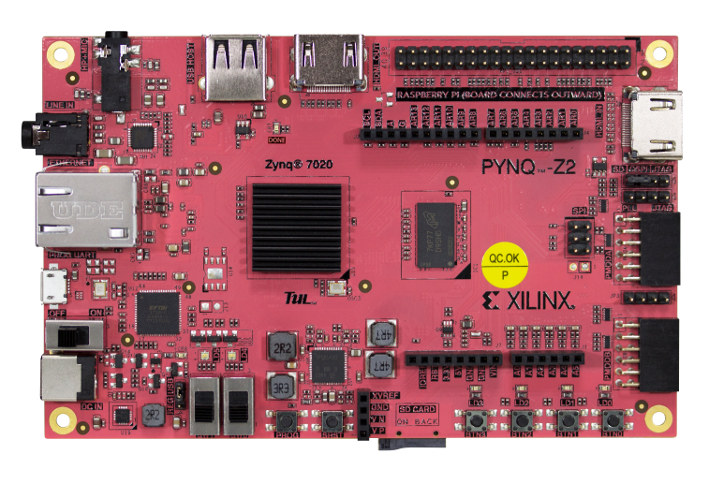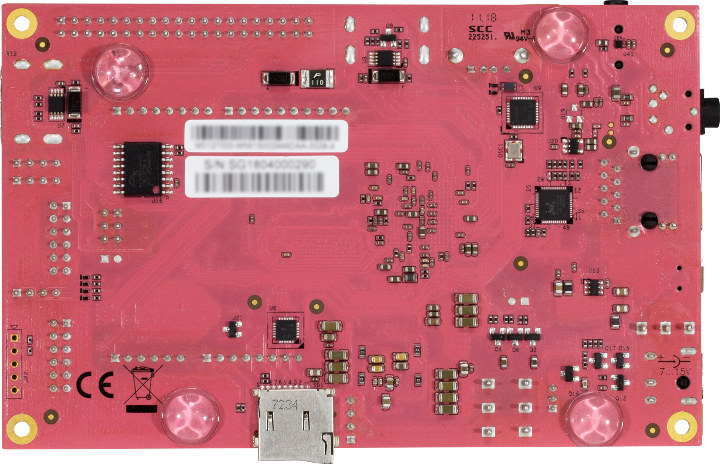PYNQ-Z1 is a board by Digilent powered by Xilinx Zynq-7020 Arm Cortex-A9 + FPGA SoC that’s designed specifically for PYNQ, an open-source project that aims to ease the design of embedded systems with Xilinx Zynq Systems on Chips (SoCs) by leveraging the Python language and libraries.
PYNQ-Z2 is very similar to PYNQ-Z1, but it’s made by Taiwanese company TUL, and the board is slightly longer to allow for an extra 40-pin Raspberry Pi compatible header, and Analog Devices ADAU1761 24-bit audio codec.

PYNQ-Z2 board specifications:
- SoC – Xilinx Zynq-7020 (XC7Z020-1CLG400C) dual core Arm Cortex-A9 processor @ 650 MHz with FPGA with 13,300 logic slices, each with four 6-input LUTs and 8 flip-flops
- System Memory – 512MB DDR3
- Storage – Micro SD card slot, 16MB QSPI Flash with factory programmed globally unique identifier (48-bit EUI-48/64 compatible).
- Video – HDMI In and HDMI Out
- Audio –
Mic in, Line OutADAU1761 codec with 3.5mm HP + Mic jack, 3.5mm Line in jack
- Networking – Gigabit Ethernet
- USB – 1x USB Host connected to Arm processor, 1x micro USB port for programming/power,
- Expansion headers
- 1x Arduino Header with 49 GPIOs
- 2x Pmod with 16 GPIOs
- 40-pin Raspberry Pi header (N.B.: shares 8 pins with 1 Pmod)
- Misc – 6x user LEDs, 4x push buttons, 2x switches
- Power Supply – 5V via micro USB port, or 7V to 15V power source
- Dimensions – 140 x 87mm

You’ll find resources to get started with TUL PYNQ-Z2 board and PYNQ framework on readthedocs.io. Beside PYNQ-Z1 and PYNQ-Z2, three Xilinx Zynq UltraScale+ boards are supported by PYNQ framework: the official Xilinx ZCU104 and ZCU111 boards, as well as 96Boards compliant Avnet Ultra96. You’ll find firmware images and resources on PYNQ.io boards page, where you’ll also find a guide to port ZYNQ to your own Xilinx Zynq board.
PYNQ-Z2 board can be purchased for under $120 plus shipping on DFRobot, Seeed Studio, Newegg, and other online stores. You’ll find more details and a list of distributors on TUL’s product page.

Jean-Luc started CNX Software in 2010 as a part-time endeavor, before quitting his job as a software engineering manager, and starting to write daily news, and reviews full time later in 2011.
Support CNX Software! Donate via cryptocurrencies, become a Patron on Patreon, or purchase goods on Amazon or Aliexpress





